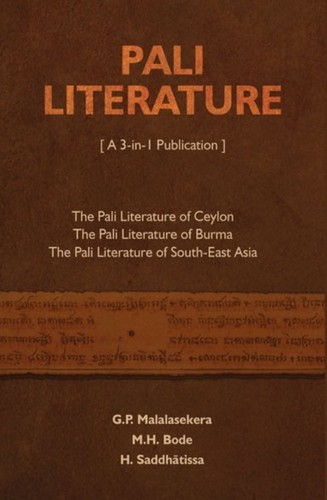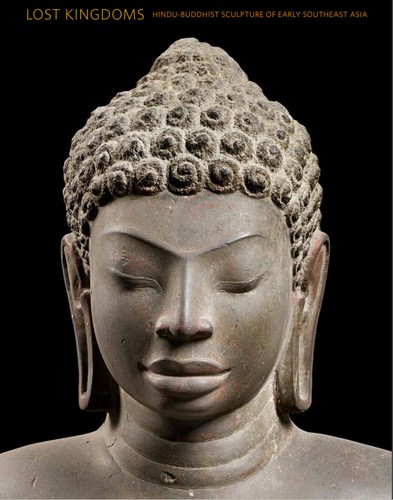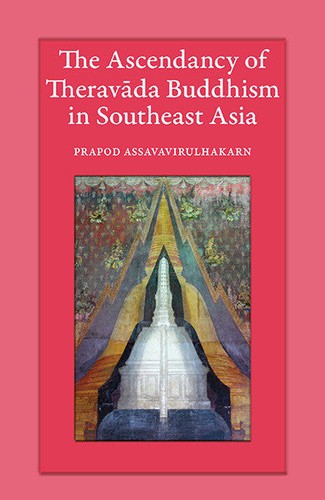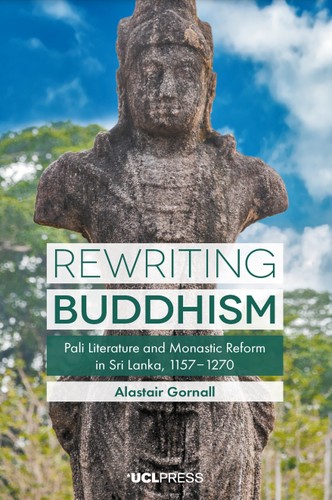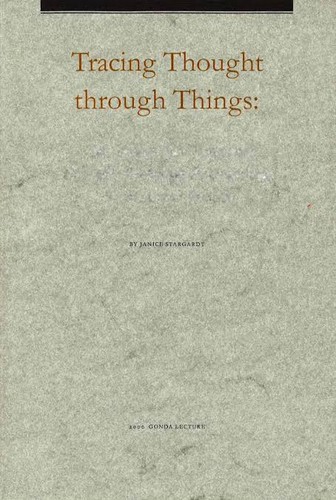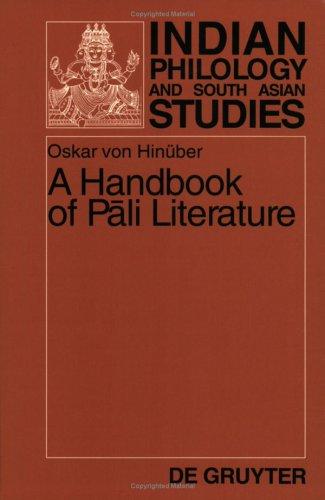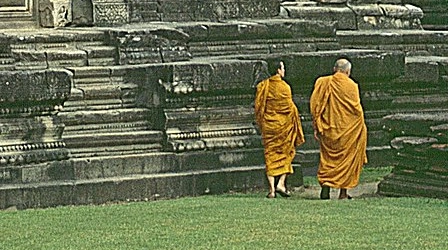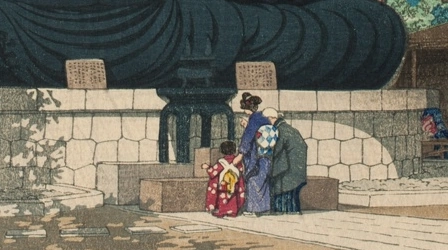History of the Theravāda
Subscribe to this topic via: RSS
From the splitting of Buddhism into various pre-Mahayana sects until the modern period.
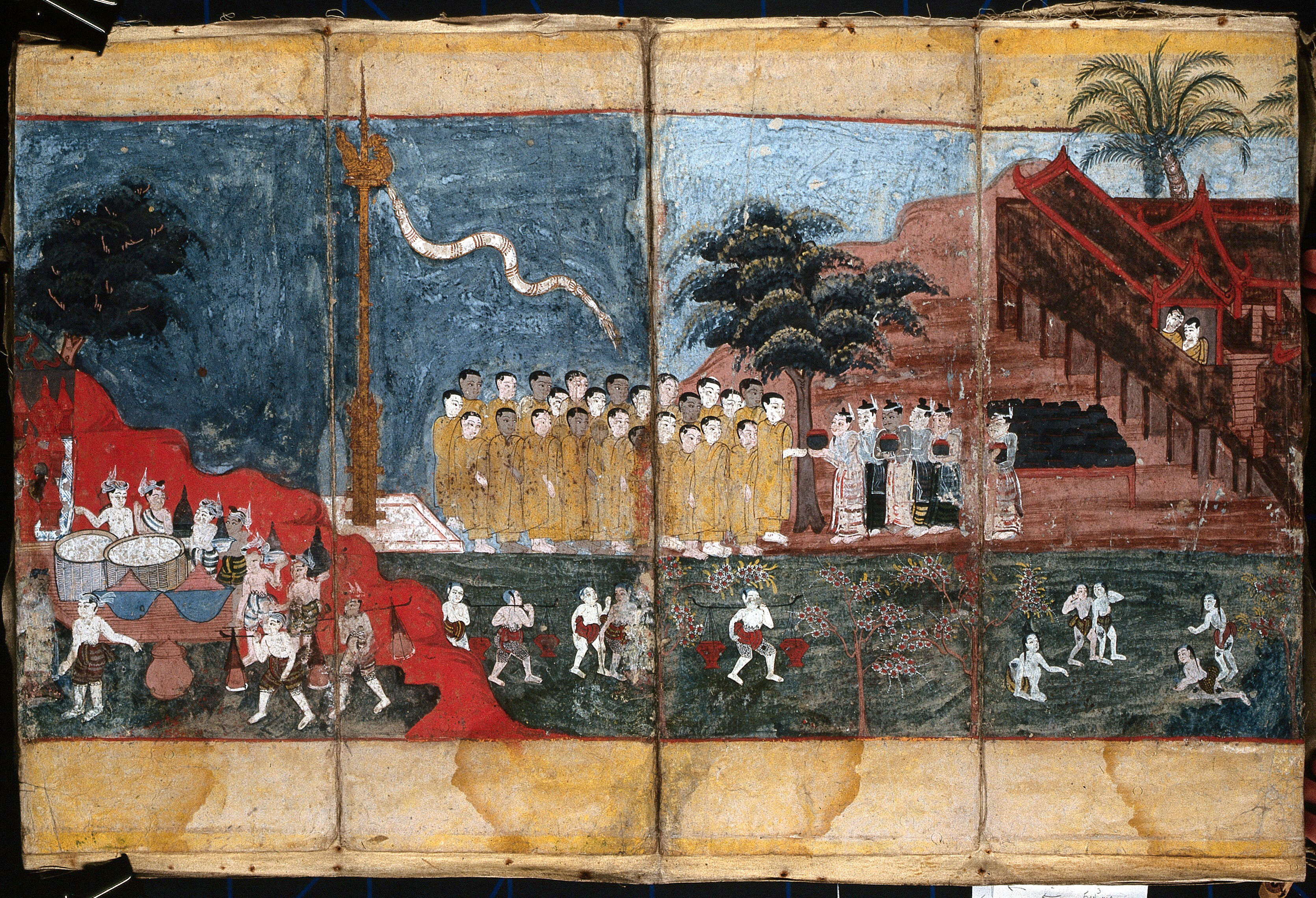
This nineteenth century, Burmese gouache painting depicts twenty-four monks receiving almsbowls of rice from well-dressed laymen while other laymen and women busy themselves with various things. Above the monks, a Naga-like banner flies in the breeze (Courtesy of the Wellcome Library)
Table of Contents
- Books (10)
- Canonical Works (6)
- Readings (40)
- Audio/Video (13)
- Reference Shelf (2)
- Related Topics (2)
Books (10)
Featured:
-
244 pages
-
The prince (Asoka) fitted out a great army consisting of the four parts, and then went forth, taking with him a branch of the Bo tree of the Tathagata.
Having passed through three kingdoms and the Vinjha range, having passed through the great forest, the prince came to the ocean.
The great four-fold army with the Bhikkhuni congregation at its head, proceeded to the great sea, carrying the excellent Bo tree.
See also:
Canonical Works (6)
Featured:
-
⭐ Recommended
The essential meditation manual of the Theravada Tradition and the book that, legend has it, convinced the Sri Lankan elders to allow Acariya Buddhaghosa to write the (now quasi-canonical) Pāli Commentaries.
-
⭐ Recommended
Here, monastics, for the donor there are three factors, and for the receivers there are three factors.
-
⭐ Recommended
May the Buddha not be hot or cold, nor be bothered by flies …
See also:
Readings (40)
Featured:
-
⭐ Recommended
The recent split between the Christian Karen National Union and the Democratic Karen Buddhist Organization is a dramatic expression of the political role of religion. Religion, religious movements, and prophetic leaders are important elements in Karen identification and their relationship with neighboring peoples, states, and colonizers. Religious cosmology and rituals are not merely the essentials of their world view but also constitute modes of empowerment
-
⭐ Recommended
Despite the Buddha’s teachings on the arbitrary nature of language, the commentarial and grammatical traditions developed a sophisticated theoretical framework to analyse, explicate and reinforce some of the key Buddhist doctrinal terms. Also, an elaborate classification system of different types of names was developed to show that the language of the Buddha was firmly grounded in the highest truth and that some terms were spontaneously arisen, even though such a concept—that words by themselves could arise spontaneously and directly embody ultimate truth—was quite foreign to their Founder.
-
After some preliminary considerations concerning orality and writing in India and the date of the Buddha, this article re-examines the questions of where and when a version of the Pali Canon was first set to writing and what were the contents of that collection. It then goes on to examine the origin and evolution of the Māgadha language we now call Pali, seeing it as derived from a written language
-
Beginning with tribal beliefs and cosmologies, this paper explores how views of the universe in Southeast Asia have been presented in both geographical and artistic works over time. Other ideas that are elucidated include religious syncretism, particularly Buddhist and Hindu ideas, that come to inform Southeast Asian ideas of the universe and how such syncretism is mapped.
-
This sequence of images of cities may lie behind the location of Nibbāna at the pinnacle of a cosmological hierarchy as has been frequently noted in ethnographic studies of contemporary Theravādin Buddhism.
-
A study of the distribution of sema stones also provides evidence for the spread of Buddhism, while Buddha images carved into rock faces on mountaintops and evidence for rock shelters illustrate that the tradition of forest monks was functioning alongside the more established urban monasticism.
-
Two of these carry extracts from the Abhidhamma; the third gives a syllabary followed by the recollection formulas of the Three Gems. The other two epigraphs are written not on stone slabs but are inscribed on small gold leaves; they contain the heart formulas of the books of the Tipi?aka and the qualities of the Buddha, Dhamma, and Sangha.
-
A translation of a medieval, Sri Lankan letter summarizing the Dhamma in Pāli verse for a friend.
-
…importation of an ordination—an act of using trans-regional monastic intermediaries to enable local initiators of reordination to start a new monastic lineage—did not necessarily entail the transplantation of the lineage of the intermediary or any features associated with that lineage in its location of origin.
-
medieval Pāli literary culture can be viewed as a form of qualified cosmopolitanism: one that advanced many of the cosmopolitan literary ideals of its time but also staunchly protected its exclusively Buddhist identity.
-
… in sketching out what the councils were, I hope to indicate how they might be fruitfully studied
-
From the point of view of both language and contents, I conclude that the Pāli inscriptions of Burma and Siam give firm evidence for a Theravādin presence in the Irrawaddy and Chao Phraya basins, from about the fifth century CE onwards.
-
This article offers further support for Lance Cousins’ thesis that the Pāli canon, written down in the first century BCE in Sri Lanka, was based largely on a Theriya manuscript tradition from South India.
-
An overview of the Pāli literature of Sri Lanka in the first millennium of the common era.
-
This article provides a concise yet informative examination of the incorporation of Brahmanic gods into Theravāda Buddhism in Cambodia. The study illuminates specific deities such as Indra, Brahma, Shiva, and Yama and their rejuvenation within the Cambodian Theravāda community.
-
Attitudes of the Thai embedded in the myths offer insight into the mechanism through which Buddhism was able to be integrated into the indigenous belief system.
-
The Abhayagiri monks were broad-minded in outlook; they maintained contacts with foreign Buddhist schools, and themselves established bases in India and in South-east Asia.
-
⭐ Recommended
An accused who was able to flee to the nearest monastery would be protected from such mob justice. Sanctuary would give the person an opportunity to explain himself and allow his accusers to calm down so the facts could be examined more objectively.
-
A brief introduction to the important text Path to Liberation. Bhikkhu Analayo first gives history of the text and moves onto to show the difference between it and the Visuddhimagga.
See also:
Audio/Video (13)
Featured:
-
An in-depth presentation of early Southeast Asian art from 2,000 BCE, the start of the Bronze Age, to the 8th century CE.
-

-

-

-

-
This 2014 talk, given at the Asian Studies Centre at Oxford University, expains the rise of Buddhist nationalist movements in Myanmar and Sri Lanka and the current state-religion relations in the two countries. It further traces the historical and contemporary connections, monastic involvement in politics, and how some Buddhists justify their attitudes and actions towards non-Buddhists.
-

-
 47 min
47 min -
In this talk, Walker gives a brief overview of the intellectual culture of Lanna (present-day northern Thailand) during the late fifteenth and early sixteenth centuries. He proceeds to elucidate certain exegetical methods crafted by Lan Na monks and lay scholars throughout the initial century of Burmese governance, showing how Thai Buddhist culture came to accept and extend Burmese scholasticism.
See also:
Reference Shelf (2)
Featured:
-
249 pages
See also:
